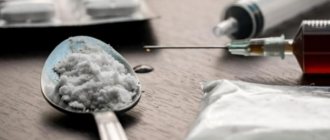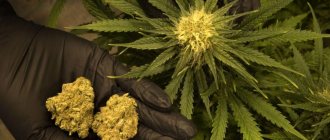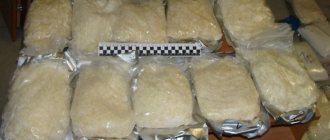Anonymously
Around the clock
Attention! The material contains information about substances, the use of which can cause serious harm to your health!
It is impossible to determine the exact number of types of narcotic substances, since this list is constantly updated with new synthetic compounds and combinations of known drugs. Trying to circumvent the law and in pursuit of new sensations, drug traffickers are constantly working on changing formulas, creating new types of drugs, different in their action and consequences.
- What are drugs
- All types of drugs
- Opiates
- Designer drugs
- Narcotic grass
- Amphetamines
- Cannabis preparations
- Psychotropic substances, psychostimulants
- Sedatives
- Legal
- Classification by pharmacological properties
- Opium analgesics
- Psychostimulants
- Antidepressants
- Hypnotic
- Hallucinogens
- Psychedelics
- Dissociatives
- Classification by strength
- Light drugs
- Heavy drugs
- The most dangerous drug
- Classification of drugs by composition
- Synthetic
- Vegetable
- Types of drugs by method of use
- Smoking rooms
- Snuff
- Intravenous drugs
- Classification by release form
- Tablets, capsules
- Drugs in powder form
- Liquid drugs
- List of the most popular drugs
- Table of narcotic drugs (harm scale)
- List of prohibited substances
- Drugs in medicine
- Drug addiction treatment in
- Rehabilitation of drug addicts in Moscow
We will select an individual treatment plan
Free consultation 8-800-200-27-23
Treatment prices:
| Service | Price, rub) |
| Types of therapies | |
| Standard detoxification therapy | 3 500 ₽ |
| Double Detox Therapy | 6 000 ₽ |
| Enhanced Detoxification Therapy | 7 500 ₽ |
| Maximum detoxification therapy | 9 500 ₽ |
| Quick sobering up at home | 7 500 ₽ |
| Hospital at home 1 day | 22 000 ₽ |
| Advanced hospitalization | 15 000 ₽ |
| Treatment in hospital | |
| Accommodation | |
| Economy chamber (6 beds) | 2 000 ₽ |
| Standard room (4 beds) | 3 000 ₽ |
| Increased comfort (2 seater) | 5 500 ₽ |
| VIP chamber (1 person) | 12 500 ₽ |
| Individual post 24/7 | 5 000 ₽ |
| Medical and social rehabilitation 21 days | 140 000 ₽ |
| Service | Price, rub) |
| Initial consultation with a narcologist | for free |
| Consultation with a psychologist in person | 6 000 ₽ |
| Consultation with a psychologist online | 5 000 ₽ |
| Full-time course (4/month) | 22 000 ₽ |
| Online course (4/month) | 18 000 ₽ |
| Consultation with a narcologist | 3 000 ₽ |
| Consultation with a psychiatrist in person | 6 000 ₽ |
| Online psychiatrist consultation | 5 000 ₽ |
| Consultation with the head physician | 10 000 ₽ |
| Psychodiagnostics / pathological diagnostics | 7 500 ₽ |
| Family psychotherapy | 7 000 ₽ |
| Coding at home Torpedo | 7 500 ₽ |
| Express output and encoding (doublet) | 13 500 ₽ |
| Coding using the Dovzhenko method | 12 000 ₽ |
| Hypnosis classic session | 13 000 ₽ |
| Ericksonian hypnosis session (NLP) | 8 000 ₽ |
| Coding method Torpedo | 5 500 ₽ |
| Double block | 8 000 ₽ |
| Esperal injection for 1 year | 9 900 ₽ |
| Tetlong for 3 months | 10 500 ₽ |
| Esperal gel for 1 year | 15 000 ₽ |
| Selincro course of therapy | 12 500 ₽ |
| Implantation of Disulfiram for 1 year | 18 000 ₽ |
| Vivitrol injection for 1 month | 26 000 ₽ |
| Naltrexone stitching for 3 months | 35 000 ₽ |
| Neuroimplantation Prodetoxon for 6 months | 47 500 ₽ |
| Narcopsychotherapy session | 50 000 ₽ |
| Neutralization of encoding | specify |
| Psychodiagnostics / pathological diagnostics | 7 500 ₽ |
| Psychotherapy session | 5 000 ₽ |
| Family psychotherapy | 6 000 ₽ |
| Outpatient rehabilitation in Moscow | 33 000 ₽ |
Expand
How is the size of drugs determined?
Significant, large and especially large sizes of narcotic substances and plants containing narcotic substances are approved by government decree No. 1002 of October 1, 2012.
For example, N-methylephedron and its derivatives, the sale of which Ivan Golunov was accused of selling, in large quantities corresponds to more than 1 g of the substance.
Determination of the size of illegal drugs during criminal prosecution (grams over)
| Significant | Large | Extra large | |
| Cocaine | 0,5 | 5 | 1500 |
| Heroin | 0,5 | 2,5 | 1000 |
| Amphetamine and its derivatives | 0,2 | 1 | 200 |
| Methamphetamine | 0,3 | 2,5 | 500 |
| Hashish (anasha, cannabis resin) | 2 | 25 | 10 000 |
| Cannabis (marijuana) | 6 | 100 | 100 000 |
| Cactus containing mescaline | 50 | 250 | 25 000 |
| Coca bush (plant of the genus Erythroxylon) | 20 | 250 | 20 000 |
| Hemp (plant of the genus Cannabis) | 6 | 100 | 100 000 |
According to a study by the Institute for Law Enforcement Problems, “Map of Drug Crimes in the Russian Federation,” as of 2014, the most frequently seized drugs by law enforcement are cannabinoids, heroin and amphetamines.
All types of drugs
All narcotic substances are conventionally divided according to their source of origin, method of manufacture, pharmacological properties, effect on the psyche and consequences of use.
Opiates
Plant types of opiates are made from poppy seeds (opium, cocaine), but today there is a chemical formula on the basis of which many synthetic drugs with a similar effect are created, such as methadone, tramadol, promedol and others. There are also opiates synthesized on a plant basis - heroin, hydromorphine, dihydroxycodeinone and others.
- Heroin (other names: gerych, horse, relish, white) has been one of the most popular opium drugs since the early 90s. It has very strong toxicity and forms physical dependence in 2-3 doses.
- Poppy straw (slang names: hay, straw) – dry parts of the stem and bolls of poppy. It is consumed separately, and acetylated opium is also produced (a dark brown solution with a vinegary odor).
- Raw opium (slang names: khanka, cake, opiukha) is a substance made from the juice of the poppy plant. Reminds me of plasticine or brown powder.
- Methadone is a synthetic opium drug. May be in powder or solution form. Some countries prescribe this drug to treat opium addiction.
DETOXIFICATION FROM DRUGS
Designer drugs
In search of new sensations and to enhance the narcotic effect, some “creators” combine existing substances or synthesize completely new formulas to attract a wide range of young people and increase demand, calling such “cocktails” designer ones . The results of such experiments most often carry unpredictable and extremely negative consequences.
Narcotic grass
Not only marijuana is called a narcotic herb, but also other plant drugs: poppy straw, opium, mushrooms, mescaline (found in American cacti). Natural psychotropics are just as harmful to the body as synthetic substances. They also cause persistent addiction, leading to the destruction of the body at all levels.
Amphetamines
This psychoactive substance, which belongs to the synthetic group of drugs, is obtained from certain medications. After use, the drug excites the nervous system, making the person very active and emotional. Under the influence of amphetamines, a person does not feel hungry or tired, so he can go without eating or sleeping for a long time, depleting his body.
- Ephedrone (in slang - gunpowder, jef, talker) is a narcotic solution that has a pink or transparent color.
- Pervitin (screw, bolt) is an oily liquid substance. Some people start using this drug to avoid the severe withdrawal symptoms that come with taking heroin. However, this drug has an even more destructive effect on the body.
- Ephedrine is a yellow or white crystalline powder. Often obtained from drugs.
Amphetamine addicts usually live no more than 1-2 years. Death can occur as a result of overdose, damage to the cardiovascular system (heart attacks and strokes), exhaustion of all organs, HIV and hepatitis. The drugs have very strong effects on the brain and nervous system, which lead to serious mental illness.
Cannabis preparations
Hemp grows in many countries with warm temperate climates. Depending on the region, the amount of narcotic substances – cannabinoids – varies. Based on it, many psychoactive drugs of plant origin are made.
- Marijuana (schmalt, weed, anasha) is dried greens and cannabis buds that are crushed and used for smoking or adding to food.
- Hashish (plan, dope, cannabis) is a clay-like substance made from the resin, pollen and upper leaves of the plant.
Regular use of such drugs leads to severe depression, accompanied by panic attacks and suicidal thoughts. There is a violation of coordination, memory and attention, and mental degradation occurs. In advanced cases, addiction can cause mental disorders such as psychopathy or paranoia. When using cannabis in childhood and adolescence, sexual development slows down and can lead to impotence and infertility in the future.
But the main harm of drugs made from hemp and other “soft” drugs is that they are a kind of “springboard” for switching to hard drugs. According to statistics, the vast majority of heroin and cocaine addicts start trying surfactants with hemp.
List of the most popular drugs
Marijuana takes first place. Millions of people smoke it around the world. The low cost, myth of safety and relative availability have led to the legalization of weed in some countries.
Next come spices and salts. These substances are especially popular among clubbers. While the next composition is added to the list of prohibited substances, dealers are already changing the components, so the number of people using and selling such mixtures is still growing inexorably. The harm they cause is almost the same as the harmful effects of heroin or amphetamine - toxic shock, crime and suicide, and dehydration are possible. In severe cases, a person is saved from death, but he remains forever with a damaged brain or other organs.
Ecstasy was at the peak of its popularity in clubs in the late 90s and early 2000s. Multi-colored pills caused a sharp surge of energy, a feeling of joy and euphoria, and sexual desire increased many times over. Next comes severe dehydration, nausea, vomiting and all the delights of a “departure”. Since even rat poison was mixed into such tablets, it is almost impossible to predict the outcome. Alas, today interest in ecstasy, although it has dropped significantly, remains noticeably high.
Events
14.02.22
Active winter holidays in
Most addicted people do not have hobbies and do not know how to spend time fun and useful without “doping.” Even the most...Read more (~1 min.)
«
28.01.22
Visit to the sports complex by participants of the resocialization program
One of the main tasks of resocialization is to introduce those recovering to sports and a healthy lifestyle. Treatment and rehabilitation center “Zdravnitsa”…Read more (~2 min.)
«
11.01.22
In the center is the guest and mentor Orthodox priest Monk Kirrion
Drug addiction and alcoholism are one of the most serious problems today; addictions claim thousands of lives every year. One of…Read more (~1 min.)
«
06.01.22
New Year in rehabilitation
New Year is perhaps the most favorite holiday in Russia for adults and children. A special, fabulous atmosphere and home comfort are created...Read more (~2 min.)
«
All events
Psychotropic substances, psychostimulants
This group usually includes drugs created for the treatment of mental disorders, for example, Carbidine, Haloperidol, Fluphenazine . Having a strong sedative effect, in large dosages they can influence consciousness and cause narcotic intoxication. In pharmacies, such drugs are dispensed only by prescription, however, drug addicts find ways to purchase them.
Sedatives
When sedatives are used in recommended doses, they are safe for the body and psyche. But a strong increase in dosage is used by drug addicts to achieve a feeling of euphoria. Uncontrolled use of sedatives leads to severe dependence and damage to the central nervous system and brain.
Legal
Despite the fact that most pharmaceutical drugs that can alter consciousness and are used to achieve drug intoxication are strictly controlled by the state and are available only by prescription, drug dealers are coming up with new ways of making surfactants from drugs.
New drug formulas are also constantly being synthesized, which remain legal until they are included in the register of prohibited drugs at the state level.
Find out treatment recommendations without leaving home for free
To select a treatment plan, you just need to leave a request, we will contact you to select the time and specialist you need
Submit your application
Classification by pharmacological properties
The narcotic effect can be expressed either as a result of stimulation of the nervous system, or, conversely, as a result of its inhibition. Therefore, drugs can be classified according to their effects on the body.
Opium analgesics
All opiates have a sedative and analgesic effect - they depress the nervous system, cause motor inhibition, and slow down reactions.
A strong physical and mental dependence on these drugs develops after the first use. On average, an opium addict lives about 3-5 years after the first dose.
Death most often occurs from drug overdose, liver disease, HIV and hepatitis infections (due to shared syringes and lack of hygiene during intravenous administration. In addition, the use of opium drugs leads to a severe decrease in immunity, venous disease, tooth decay, impotence, and dementia. Opiates cause the most painful withdrawal syndrome (withdrawal) among all surfactants.
Psychostimulants
Drugs that stimulate the activity of the brain and nervous system. These include amphetamine, cocaine, methamphetamine, etc.
Antidepressants
Sedatives in greatly increased doses can be used for narcotic purposes. By depressing the nervous system, they lead to impaired coordination, disorientation in space and detachment from all pressing problems.
In large dosages, these drugs quickly cause physical and mental dependence. Withdrawal syndrome from them can last for 3-4 months, manifesting itself in insomnia, irritability, apathy and suicidal thoughts.
Hypnotic
One of the most popular drugs is Phenazepam . Possessing a powerful sedative effect, in large dosages it causes changes in consciousness and hallucinations. Long-term use of the drug can lead to irreversible mental disorders.
As a result of taking pharmaceutical drugs (sedatives and hypnotics), severe brain damage occurs, similar to epilepsy, delusional states, and hallucinations. Death often occurs due to exhaustion of the heart muscle, liver destruction, an overdose of drugs, or as a result of withdrawal after abrupt withdrawal.
Hallucinogens
This group includes a number of drugs, very different in composition and origin, that can influence human consciousness, changing sensations and emotions and causing visual and auditory hallucinations.
- LSD (in slang - acid, red dragon, marks) is a completely synthetic substance that has a severe hallucinogenic effect. It can be in the form of powder, tablets or liquid, which is soaked into fabric or paper.
- Psilocybin (mushrooms, toadstools) - some types of mushrooms containing this substance can cause hallucinations. The biggest danger of this drug is its availability. Fungi grow all over the world and it is almost impossible to control their spread.
The consequences of using hallucinogens are a high likelihood of developing mental illness, personality disintegration, irreversible changes in the structure of the brain and central nervous system.
Long-term use of this drug leads to increased aggression, anger, and irritability. Often, addicts who use such substances die due to suicide or an accident resulting from altered consciousness and hallucinations.
Leave a request for a free consultation with a specialist
We will contact you as soon as possible
- — Anonymous
- - For free
- — Around the clock
Psychedelics
A group of drugs causes a change in thinking and perception. Some of them enhance the emotional sphere (ecstasy), others increase resistance to stress (bufotenine, TMA)
Dissociatives
The effect of these drugs leads to impaired consciousness and personal disorientation. These include ketamine, calypsol, phencyclidine, etc.
Classification by strength
Light drugs
Cannabis-based drugs are considered soft drugs because addiction to them develops more slowly compared to stronger drugs. But at the same time, weak drugs quickly lead to psychological dependence: a person strives to experience intoxicating euphoria and a feeling of liberation again and again. But over time, the sensations become dull and he increases the dose, provoking physical dependence and the appearance of withdrawal symptoms when the drug is discontinued.
Heavy drugs
Potent drugs can form a stable dependence from the first doses. They are extremely destructive to the body. Regular use creates terrible withdrawal symptoms, as a result of which a person can even die. As a rule, if a drug addict switches to heavy drugs, then he has no more than 2-4 years to live, filled with torment from withdrawal and the only desire - to obtain and take the treasured drug.
The most dangerous drug
Until recently, opium was considered the most powerful drug in the world, with an extremely destructive effect on the body and psyche. Today, many synthetic salts and spices are in no way inferior to heavy substances in their destructive effects.
REMOVAL AT HOME
New table of drug sizes, effective January 1, 2013
Resolution No. 1002 of October 1, 2012 was adopted “On approval of significant, large and especially large sizes of narcotic drugs and psychotropic substances, as well as significant, large and especially large sizes for plants containing narcotic drugs or psychotropic substances, or their parts containing narcotic drugs drugs or psychotropic substances, for the purposes of Articles 228, 2281, 229 and 2291 of the Criminal Code of the Russian Federation.” This resolution approved new sizes of narcotic drugs for their use in accordance with the new edition of Articles 228, 228.1, 229, 229.1 of the Criminal Code of the Russian Federation, which will come into effect from 01/01/2013. With the entry into force of Resolution No. 1002 (also from 01/01/2013), the new sizes of narcotic drugs and psychotropic substances will be divided into three categories: significant, large and especially large size. I would like to note right away: after the introduction of new sizes (or, as they say, scales), previously passed sentences will not be reviewed. New editions of the “drug” articles of the Criminal Code of the Russian Federation and new sizes of drugs significantly tighten punishment for committing crimes. Take, for example, cannabis oil (“Khimka”). Currently, the large size is 0.4 grams, and the extra large size is 5 grams. The current version of Article 228.1 of the Criminal Code of the Russian Federation provides for the following sanctions: - under Part 1 for the sale of any weight up to 0.4 grams: from 4 to 8 years in prison; - under Part 2 for sale on a large scale, that is, from 0.4 to 5 grams: from 5 to 12 years in prison; - under Part 3 for sale on an especially large scale, that is, from 5 grams to infinity: from 8 to 20 years in prison. The version of Article 228.1 of the Criminal Code of the Russian Federation, which comes into force on January 1, 2013, will provide for other sanctions: - under Part 1, the sanctions and amounts of narcotic substances have not changed; — under Part 2, liability was introduced for sales in public places and using the Internet: from 5 to 12 years in prison; - under Part 3 for sale in a significant amount, that is, from 0.4 to 5 grams: from 8 to 15 years of imprisonment (now liability for the same weight is established by Part 2 and ranges from 5 to 12 years); - under Part 4 for sale on a large scale, that is, from 5 grams to 1 kg: from 10 to 20 years in prison; - under Part 5 for sale on an especially large scale, that is, over 1 kg: from 15 to 20 years in prison. Thus, the replacement from the beginning of 2013, for example, of a large amount of a narcotic drug with a significant amount will not in any way affect the sanction for this weight, therefore there are no grounds for revising already passed sentences. But the punishment for those who commit a crime related to drug trafficking is significantly increased, starting from 01/01/2013. The lower sanctions for all parts of Article 228.1 of the Criminal Code of the Russian Federation (except for the first) have increased by 2-3 years. It is also worth noting that due to the tougher penalties, Law 18-FZ will not have retroactive effect. That is, all persons who committed crimes related to drug trafficking before 01/01/2013. will be judged according to the currently valid version of the Criminal Code of the Russian Federation, even if the trial takes place after the beginning of 2013. The only relaxation that is available in Resolution No. 1002 concerns aqueous solutions of narcotic drugs and psychotropic substances from List I. Since 2013, for all liquids and solutions containing at least one narcotic drug or psychotropic substance listed in List I, their quantity is determined by the dry weight residue after drying to constant weight at a temperature of + 70 ... + 110 degrees Celsius. In the Resolution in force until 2013, there was no such note, so the weight was determined by the weight of the entire mixture. On this basis, it is theoretically possible to review sentences after 01/01/2013. The new table of sizes of narcotic drugs and psychotropic substances can be found below.
Classification of drugs by composition
Synthetic
As a result of the synthesis of various chemical compounds, new narcotic drugs are created. These include LSD, ecstasy, spice, and barbiturates. New synthetic drugs are constantly being created and spread very quickly, since it is not always possible to quickly identify and prohibit a new composition at the legislative level. At the same time, artificial psychotropics are often much more destructive to the body than their plant counterparts.
Vegetable
Plant drugs are obtained from substances found in plants and fungi. Thus, opiates are made from the juice and dried poppy flowers, marijuana and hashish are made from hemp, mexalin is made from cacti, and psilocybin is found in many inedible mushrooms.
Types of drugs by method of use
Smoking rooms
In addition to cannabis-based drugs, smoking drugs include cocaine, heroin, amphetamines and various synthetic salts.
Many people do not mistake smoking weed for drug use, considering it harmless. Physical dependence on it actually occurs much more slowly, but even periodic use forms a very persistent mental addiction, which is difficult to treat.
Snuff
Addicts can use almost all types of drugs to snort through their nose. Fearing an intravenous injection, some begin to use hard drugs through smoking or inhalation, thinking that it is safer.
But this statement is completely unjustified, since only the time of “arrival” and the duration of action depend on the method of use. The harm from a drug, the consequences of its use and the formation of cravings do not depend on what the drug looks like or how it was used.
Intravenous drugs
For intravenous administration, solutions based on cocaine, heroin, salts and other narcotic drugs are used.
List of prohibited substances
The official list of prohibited substances in Russia is quite impressive.
This includes:
- mescaline
- psilocybin
- poppy straw
- milky sap of the plant
- coca bushes
- cannabis
- various types of synthetic acids.
As for spices and salts, they are included in the list if they contain at least one psychotropic component, regardless of the quantity.
A separate list includes substances whose circulation is restricted. These are codeine, aminorex and other components that are included in some medications.
Classification by release form
Tablets, capsules
Medical drugs and synthetic drugs are often found in this form. This form does not necessarily mean taking the drug orally or for resorption. Some crush tablets for smoking and inhaling, or dissolve in liquids for intravenous administration.
Drugs in powder form
Any synthetic substance is usually sold in powder form. Drug addicts can use powdered drugs in this form or make other forms of the drug based on them.
Liquid drugs
Almost any drug is sold in liquid form. There are also a lot of ways to use such surfactants.








